The North American F-86K(aasjager) of the RNLAF (1956-1964)
This article is part of a series:
- My first post, the RNLAF (KLU) F-104G Starfighter
- Here’s another one. The F84G Thunderjet.
- A 3rd RNLAF fighter I want to show you.
- The RNLAF Northrop NF-5A Freedom Fighter
- The North American F-86K(aasjager) of the RNLAF (1956-1964)
- RNLAF Spitfire Mk. IX 1/48
- RNLAF Noorduyn AT-16 Harvard IIB
- The Fokker D.XXI of LVA
- The RNLAF F-86F Thunderstreak
- F-16A MLU RNLAF 322nd Squadron "Polly Grey" 60th anniversary 2003
- Brewster B-339 of ML-KNIL Ve Vliegtuiggroep 2e Afdeling (Tamiya 61094 1/48)
This kit from Special Hobby sure has it's challenges. Most difficult part was connecting the wings to the fuselage as the fitting was quite dramatic.
All in all, I am happy with the result. What do you all think?
Below a little history on the F-86K ...
The F-86K, nicknamed "Kaasjager" (Cheese Hunter), served in the Royal Netherlands Air Force from 1956-1964. 63 aircraft in total were operated.
The first Kaasjagers arrived in December 1955. Most of the aircraft were delivered by ship and six were built under license at Fiat in Italy. The first aircraft went to 700 AWX squadron at Soesterberg Air Base, but from March 1959 AWX sq. was moved to Twenthe, a large Air Base for the Kaasjagers at 701 and 702 squadrons.
In the fifties, the K's were often alert because of the emerging cold war and the Hungarian crisis in 1956. There were also exercises with the Air Guard Services Corps (KLD); this was set up to supplement the still limited radar range in the Netherlands. In the mid-fifties there was also practice along the Groningen/German border with the German Luftwaffe who had received K's with the Orenda engine.
The Kaasjagers were modified from 1960 onwards at the Aviolanda factory and received an enlarged wing a.k.a. the "F-40 wing".
Around 1961, the Kaasjagers were equipped with electronic systems to fire Sidewinder GRA-8 / AIM-9B heat-seeking missiles. These aircraft were therefore used for "quick alert" in order to intercept any unknown aircraft around the clock.
However, with the arrival of the F-104 Starfighter, Kaasjager operations at the RNLAF came to an end. In July 1964 the 700 Squadron was the last section to discontinue operations with the K.
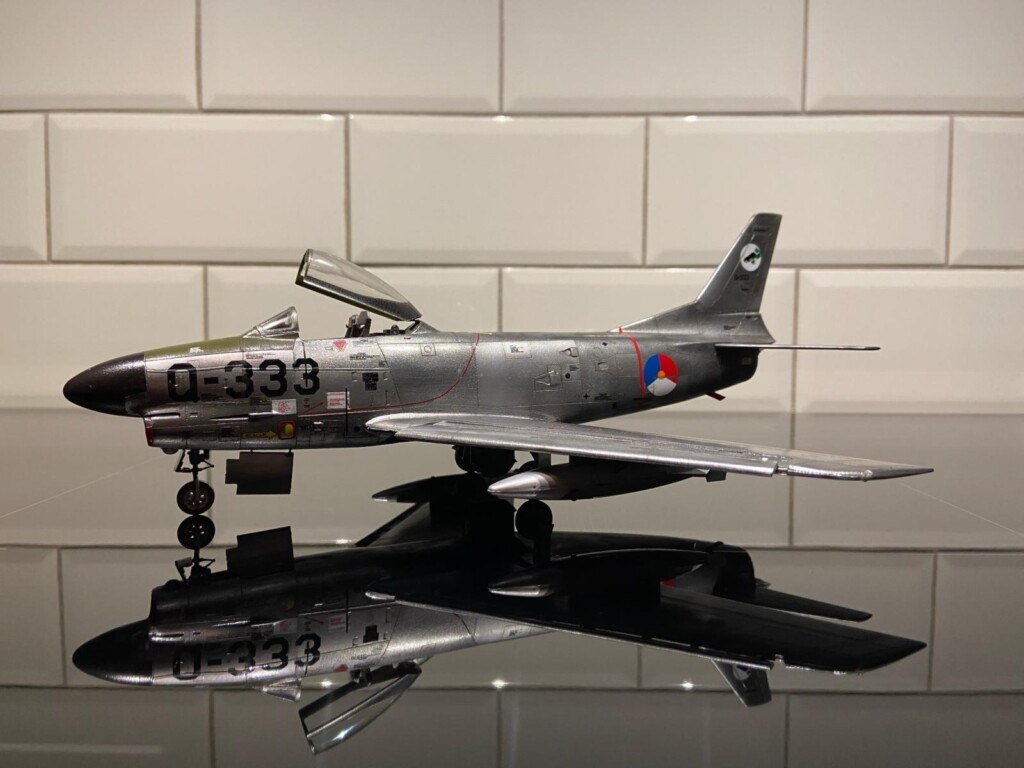
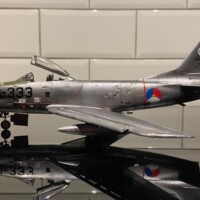
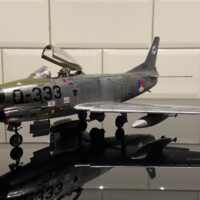
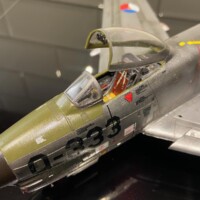
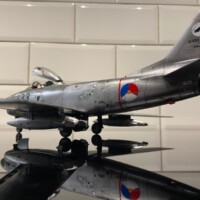

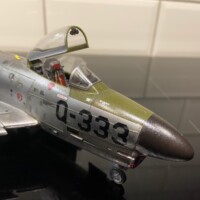
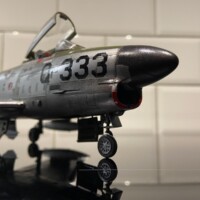

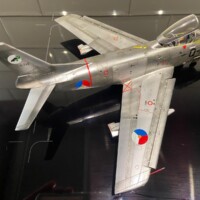
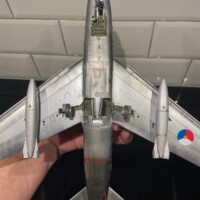
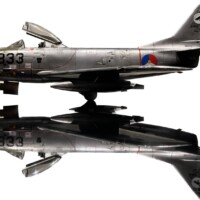
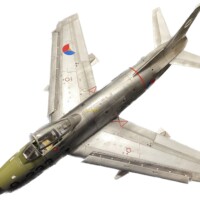
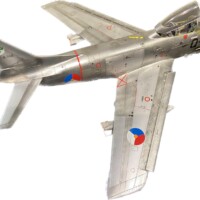

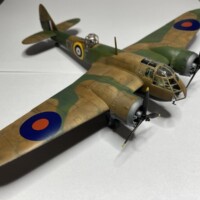
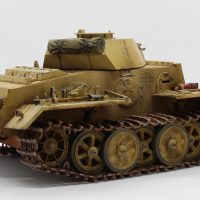
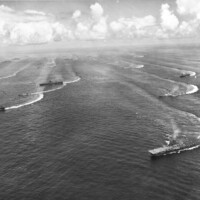
A superb result out of the challenging Special Hobby offering and a nice writeup of an important type that served in the RNLAF, Alfred!
Congratulations!
@alfred, Alfred, I think you should be pleased with that! That's a handsome aircraft and a great rendition of the same!
That's a handsome aircraft and a great rendition of the same! 
Thanks, Gary!
Thanks for your kind words, Spiros.
Well done Alfred. NMF is really difficult on a less then spectacular fitting kit like that.
Thanks, John @j-healy
Love this version of the Sabredog. With the 20 mm's and sidewinders I wonder if it could have handled the Mig 17s over Viehnam. Beautifully done!
Thanks @roofrat Robert!
Don’t think the RNLAF dogs saw any action in Nam. Only interception of the occasional “lost” Russian bomber in NATO airspace …
That's a nice-looking Sabre Dog! Well done.
Thx, Greg!
Really nice work on this. I know from personal experience just how difficult this kit is - particularly joining the wing and fuselage sub-assemblies, so Kudos to you for such a great result.
Much appreciated, Tom @tcinla.
Another excellent build of a RNLAF fighter, Alfred @alfred
The metal look did came out very nicely, what paint and technique did you use to achieve this, if I may ask.
Thanks for the supporting article, very informative.
Thanks John! @johnb
Metal look could have been better if I had sanded the whole plane as the surface was very rough, maybe because this is a short-run kit. Sanding would mean that I also had to rescribe most of the panel lines, and that scared me off to be honest.
Downside is that the gloss is less than I wanted. After pre-shading the whole plane I used three different aluminium A-STAND lacquers from AMMO to get some variation in tones. After that a few layers of Johnson Future floor finish, and finally applied some panel line accent.
Another good looking jet from my favourite era.
Thx, George!
This kit is indeed "challenging." Particularly since the main gear well doesn't fit without major chopping or midification of the gear doors to close them and hide the lack of a wheel well.
You've definitely used talent and tenacity to overcome plastic, Alfred. A great result from all that work!